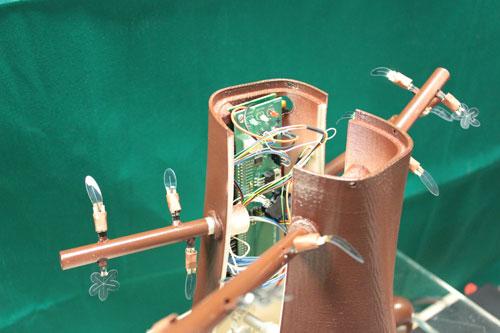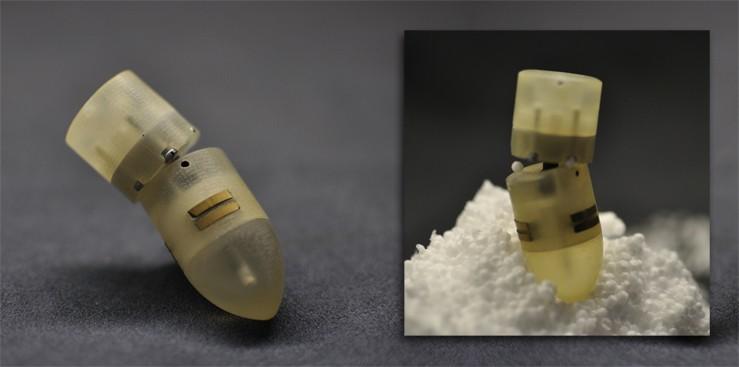Despite the reality of contemporary robotics, humans seem to persist in imagining a future that is at least semi-populated with mechanized, anthropomorphic “beings.” The Sci-Fi genre certainly reflects our greatest aspirations and most abject fears in this respect. From “Metropolis” to “Blade Runner” to “Star Wars,” androids and their antics–whether for the greater good or to our (humans’) potentially collective, violent demise–populate the silver screen, after first having made their debut in literature. The truth is, creating humanoid robots is for the most part unnecessary and even fanciful.
That doesn’t mean that the vast and diverse robotics industry isn’t interested in developing robots that in one way or another possess lifelike attributes and, more importantly, capabilities. The FP7-Plantoid Project is one such example. Researcher Barbara Mazzolai of the Instituto Italiano di Tecnologia (IIT), is the coordinator of a robotics project predicated on the distinctive behavior of another major life form: plants. Funded by Future and Emerging Technologies (FET), a major European Union program to encourage technological research and innovation, the FP7-Plantoid project looks not at animals but at plants for models of adaptability and sustainability.
While we tend to think of plants as generally passive organisms, the project is predicated on the fact that plants not only move but also sense very efficiently. Basically, FP7-Plantoid is developing a plant-like robot that mimics specific plant behaviors or capabilities. The prototype looks something like a tree, with an actual 3D printed trunk from which protrude root-like sensors. One root, explains Mazzolai, “demonstrates bending capabilities.” Like real plants, it basically goes in  search of fertile ground to extend itself and the larger plant it supports. The robot plant has sensors on the end of its roots that allow it to detect gravity, temperature, humidity, the presence of specific organic materials like nitrate and phosphate, and touch.
search of fertile ground to extend itself and the larger plant it supports. The robot plant has sensors on the end of its roots that allow it to detect gravity, temperature, humidity, the presence of specific organic materials like nitrate and phosphate, and touch.
Why touch? If a root runs into an obstacle, then it is redirected, probably for obvious reasons. One aspect of FP7-Plantoid is to program the robot to recognize obstacles such as physical barriers but also toxic or aggressive products. Another component of the project is to provide the “plantoid” with impetus to grow in a certain direction by providing it with material conducive to growth in a particular area in reasonable proximity to the root-sensor.
The roots are connected to a micro-computer that is housed in the 3D printed trunk. Also connected are appendages that approximate the activity of leaves. Their sensors look for similar things like obstacles and chemical factors, but they’re programmed to do the above-ground work of the plantoid.
Currently, the project and its prototype are not being designed and programmed to meet any specific goals beyond the basic development of the plantoid. However, project coordinator, Mazzolai suggests that applications for the robot could potentially involve detection of toxic chemicals in the environment, the monitoring and mapping of soil, space exploration in environments that would prove hostile to animal and plant life, endoscopic robots that could perform delicate surgical procedures, post-natural-disaster search and rescue operations, and more.
The three-year FP7-Plantoid operation is expected to conclude in the spring of 2015, so the last phase of the project is generally being devoted to exploring possible future applications for the plantoid. One aspiration of the research team is to consider how the robots can be used to exploit available environmental energy such as solar energy. It seems likely that future prototypes will also rely on 3D printing to varying degrees as prototypes become standardized and more widely produced. Discuss this story in the 3D Printed Plantoid Robot forum thread at 3DPB.com.
Subscribe to Our Email Newsletter
Stay up-to-date on all the latest news from the 3D printing industry and receive information and offers from third party vendors.
You May Also Like
Profiling a Construction 3D Printing Pioneer: US Army Corps of Engineers’ Megan Kreiger
The world of construction 3D printing is still so new that the true experts can probably be counted on two hands. Among them is Megan Kreiger, Portfolio Manager of Additive...
US Army Corps of Engineers Taps Lincoln Electric & Eaton for Largest 3D Printed US Civil Works Part
The Soo Locks sit on the US-Canadian border, enabling maritime travel between Lake Superior and Lake Huron, from which ships can reach the rest of the Great Lakes. Crafts carrying...
Construction 3D Printing CEO Reflects on Being Female in Construction
Natalie Wadley, CEO of ChangeMaker3D, could hear the words of her daughter sitting next to her resounding in her head. “Mum, MUM, you’ve won!” Wadley had just won the prestigious...
1Print to Commercialize 3D Printed Coastal Resilience Solutions
1Print, a company that specializes in deploying additive construction (AC) for infrastructure projects, has entered an agreement with the University of Miami (UM) to accelerate commercialization of the SEAHIVE shoreline...































